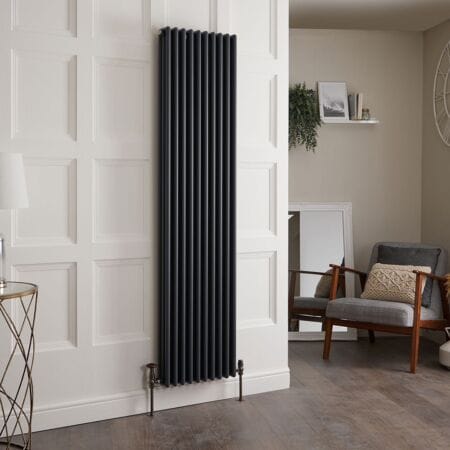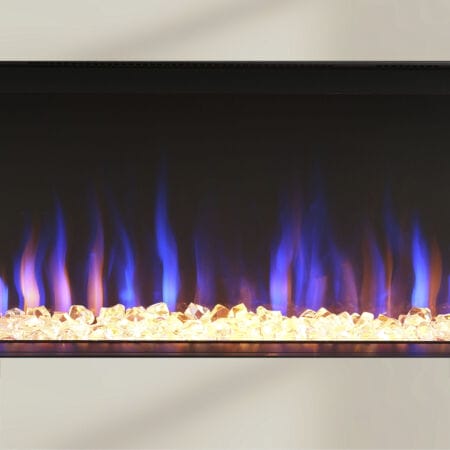Table of Contents
Contents
ToggleWhat we’ll cover…
The best practices for fixing an airlock, with tips on signals to identify the issue and how to get air out of a heating system to solve the problem.
What is an airlock, and why do I care?
An airlock occurs in instances where air becomes trapped within a central heating system, most commonly in home radiators. This pocket of air prevents hot water from circulating properly, resulting in inconsistent heating, reduced efficiency, and spiralling energy bills. Essentially, your heating isn’t operating at full flow and performing at the level you know all too well it is so very capable of.
Have you ever noticed that one of your radiators is only warming up halfway? Or radiators remaining stone cold while the rest of the house is toasty warm and cosy? Typically, you’ll find that’s probably down to an airlock – one of the most common (and frustrating) issues affecting home heating systems.
Can I fix airlocks myself?
Yes. In most cases, an airlock in a designer radiator is something you can tackle without calling in the cavalry. If you feel comfortable using a radiator key and following a few simple steps, it’s well within the realm of a DIY job. That said, if you’re not sure, or you’ve tried bleeding the radiator and the issue persists, it’s worth knowing when to enlist the services of a professional plumber. We’ll cover that below.
Required tools to fix a radiator airlock
Before you begin, gather the following tools. You don’t need to kit out like a heating engineer, but these essentials will make the job simple and quick:
Radiator bleed key
This is needed to open the bleed valve on your radiator – the first crucial step to release trapped air.
Old cloth or towel
Place this underneath your radiators to catch any water that may leak out during the bleeding process. Furthermore, it will protect your paintwork or carpet from rust-tinted splashes occurring or forming.
Bowl or container
Handy to catch any excess water from full radiators, particularly so when the radiator valve leaks more than expected.
Flathead screwdriver
Certain modern bleed valves don’t require a key – a flathead screwdriver could be a viable alternative. For example, radiators with a slotted bleed screw can be comfortably adjusted with a screwdriver. The likes of Allen keys, spanners and pliers may also work with some bleed screws.
Step-by-step guide to fixing a radiator airlock
Below are a few simple, DIY-friendly steps to follow process showing how to fix an airlock in your radiator.
Step 1: Turn off your heating
Before you start anything, switch off your boiler and allow the system to cool down for at least an hour. Bleeding a hot radiator can be a dangerous and messy process.
Step 2: Locate the cold radiator
Seek out the radiator that isn’t heating up properly. Typically, it’ll be cold at the top and hot at the bottom. This is often the space where air has gathered.
Step 3: Use your bleed key
Place your bowl or container beneath the bleed valve and position your towel there to catch any drips. Insert your bleed key (or flathead screwdriver) and slowly turn it in an anti-clockwise direction. A hissing sound will emerge as the trapped air escapes the radiator.
Step 4: Wait for water to escape
As the water begins to flow steadily out of the valve, it means the airlock has cleared. Turn the key clockwise to close the valve, but be wary not to overtighten it. Aim for just firm enough to stop potential leaks.
Step 5: Check your boiler pressure
Bleeding a radiator can lower the pressure of a heating system. Check the pressure gauge on your boiler, which will ideally be between 1 and 2 bar. If it’s dropped below this mark, top up the pressure using your filling loop.
Step 6: Switch your heating back on
Fire up your boiler and test the radiator again. If it’s now heating from top to bottom, job done! If not, you might be dealing with a larger system issue.
What to avoid when repairing a radiator airlock
Don’t bleed radiators when hot
You risk scalding yourself or others by spraying hot water around the space. Always allow adequate time for cooling down. Check the radiators are sufficiently cool at least 30 minutes after switching them off.
Don’t overtighten the valve
You’re not trying to weld the thing shut – just tighten snug enough to prevent leaks from happening.
Monitor boiler pressure
After radiators have been bled, the boiler pressure can drop. Letting it stay too low (less than 1 bar) could leave your system underpowered and inefficient, so keep a close eye out and utilise your filling loop if necessary.
When to use a professional for repairing a radiator airlock
If you’ve bled your radiator and it’s still cold, or if multiple radiators are affected at once, the airlock could be deeper issue within the system; perhaps infiltrating such your pipework or pump. Signs you might require professional assistance include:
- Gurgling noises that continue after bleeding
- Repeated drops in boiler pressure
- Heating not turning on at all
- Water leaking from valves or joints
A qualified heating engineer can commence with a system flush or diagnose faults in components such as the pump or diverter valve.
Explore the BestHeating Advice Centre for more heating hints and tips
Airlocks are annoying, but fixing them doesn’t have to be too taxing. With the right tools and a little guidance, most radiator airlocks can be easily resolved. There’s loads more helpful guidance on a vast array of heating topics in the BestHeating Advice Centre.
Meanwhile, if you fancy a switch to electric radiators or any other home heating upgrade, we’ve got you covered as well.
Let us know about your airlock fixes or radiator refreshes in the comments below, or by reaching out to us on Instagram, Facebook or X.
John is a Research Specialist for the Best Heating Advice Centre, where for over nine years he has dedicated himself to demystifying home heating for our customers. He specialises in creating clear, data-driven guides and how-to articles by collaborating directly with our team of certified heating experts and product engineers.
His work, built on a foundation of journalistic research, has helped millions of readers make confident and informed decisions about their home heating. When he’s not breaking down the heat output differentials from radiators to heated towel rails, John fancies himself as a fine football and music connoisseur.







